
For a large swathe of the UK’s population, life in the swinging sixties was not all miniskirts, psychedelia and Beatle wigs—it was hard dismal work, poverty, unemployment: a life crammed in overcrowded slums, with few amenities or pleasures. This was true for many who lived in the country’s former industrial heartlands—Liverpool, Manchester, Newcastle, Birmingham and Glasgow—the war damaged cities that were being slowly gutted and replaced by equally oppressive concrete tower blocks and uniform housing schemes in new towns.
In 1968, photographer Nick Hedges was hired by housing charity Shelter to document the “the oppressive and abject living conditions being experienced in poor quality housing in the UK” in order to “raise consciousness about the extent of unfit living conditions and to illustrate, in human terms, what the real cost of bad housing was.”
Hedges arrived in Glasgow to find it a “devastating city,” full of grim deprivation and brutality—on his first night he witnessed two youngsters rob a blind beggar of his takings. Hodges began by photographing the tenement slums of the city’s Gorbals area—once the most populated district—before heading north and west to the equally overcrowded Maryhill, where an army garrison had been kept until the 1960s as a force against any possible communist revolution. Hedges then photographed East Kilbride—one of the many new towns built after the Second World War to deal with the slum clearances—the movement of people out of places like Anderston, Gorbals and Maryhill to a better life in specially built towns. Hedges also photographed tenement life in Edinburgh, where many of the poor where decamped in the 1970s to Wester Hailes.
The wrecking ball of the 1960s and 1970s did little to ease poverty and unemployment, but it did start a new decade of house building for those in direst need. Hedges photographs powerfully document the reality of tenement life for many Scots during this era, and the endemic poverty that affected their lives, as Hedges writes:
The thing about people living in slum housing is that there is no drama…it’s about the absolute wearing down of people’s morale in a quiet and undemonstrative way.
An exhibition of Nick Hedges’ photographs for Shelter, Make Life Worth Living, is currently showing in Edinburgh till 31st October.
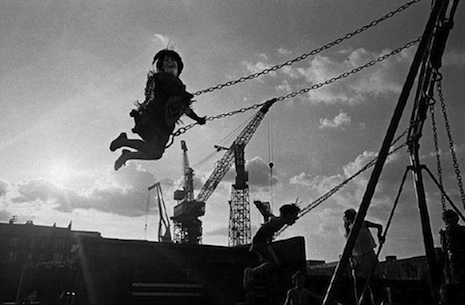
One day I travelled around Glasgow’s charming, ancient underground railway to Cessnock, and walked down to the Govan shipyards. I found a children’s playground in the shadow of cranes, running down to the edge of the Clyde.
Nick Hedges
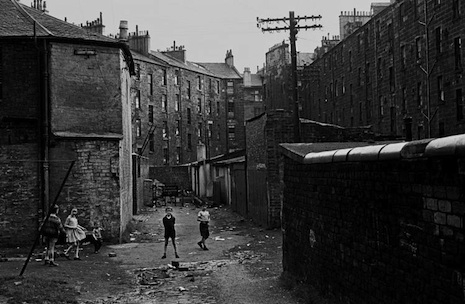
Glasgow tenement backs 1970
They are the grimmest environment that I’ve encountered. This has something to do with the size of the stone used in their construction, the entry to them through the cave like entrances, the deep and dark stairwells and the relentless pattern of streets.
Nick Hedges
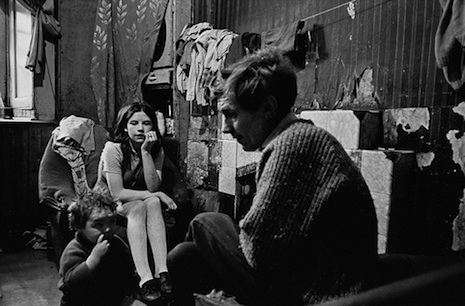
Father and children Gorbals tenement 1970
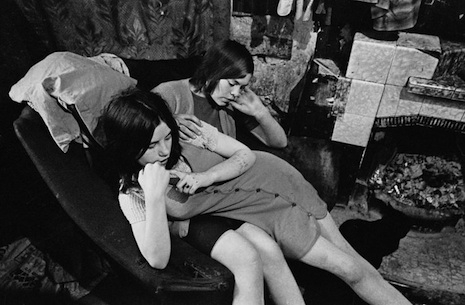
Sisters sharing a chair in a Gorbals slum tenement 1970
Mr and Mrs C lived with their large family in what was virtually a derelict flat in one of the last Gorbals Tenements. “There’s nothing now that you can get angry about. You’ve said it all before”. Two of the elder girls in the family. One was unemployed, the other about to leave school with no prospect of a job
Nick Hedges

Mother and baby in Gorbals tenement courtyard 1970
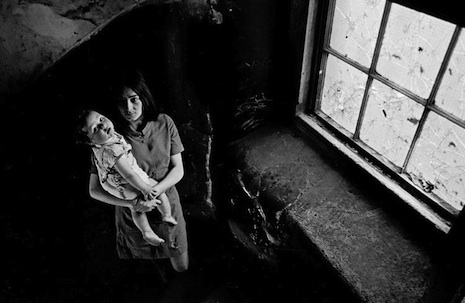
Mother and her baby on the staircase of her condemned Gorbals tenement 1970
At the end of one such block which seemed completely empty I found evidence of life. A baby in a pram, I looked up and saw his mother at a window two floors; I waved and we shouted greetings. Mrs Harley, her husband and baby son were the sole occupants of a block of tenements that at one time must have housed 150 families.
Nick Hedges

Father and babe in a Gorbals slum tenement 1970

Mother and child living in a damp and semi derelict tenement, Glasgow 1971
One morning they’d been woken up by the sound of a demolition gang’s ball and chain smashing into the end of the block in which they lived. They’d stopped the demolition but had still to be rehoused. I called back in November and they were still there, despite frequent visits to the council offices.
Nick Hedges

View of tenement backs Glasgow 1971

Mother living with her children in an overcrowded single end tenement flat Glasgow 1971
Mr and Mrs K lived with 2 children in a single roomed tenement flat. The flat was exceptionally damp and its fabric was in very poor condition. The family was rehoused by Christian Action Housing Association.
Nick Hedges
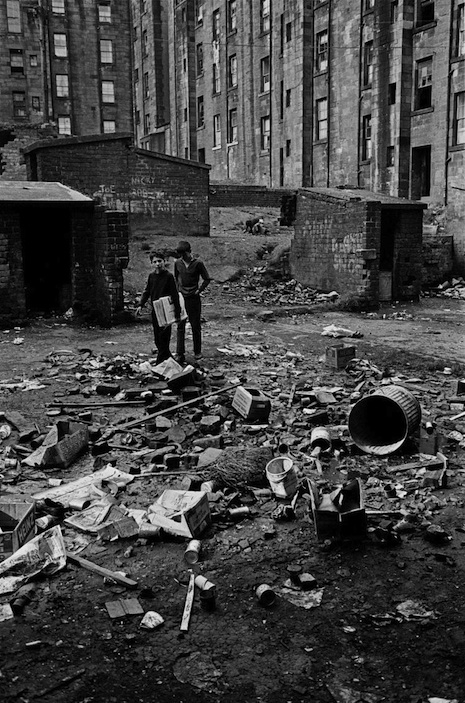
Boys delivering newspapers Maryhill tenement block 1971

Teenage girls waiting in backyard of tenement block Maryhill 1971
Two of the elder girls in the family. One was unemployed, the other about to leave school with no prospect of a job.
Nick Hedges
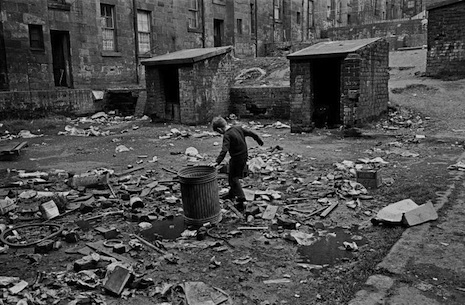
To the north-west of Glasgow city centre I discovered Maryhill. The tenement blocks here were thickly populated, and the courtyards ankle deep in rotting garbage.
Nick Hedges

Children playing in semi derelict tenements Maryhill Glasgow 1971

Couple in a Leith tenement flat Edinburgh 1972
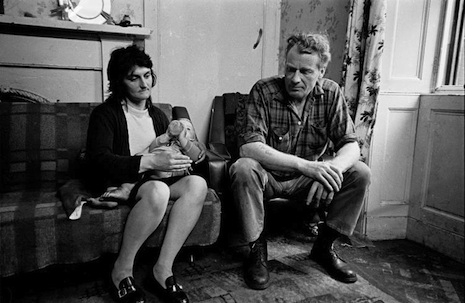
Couple and child in a Edinburgh tenement flat 1972
Mr P: “We’re no better than anyone else, but we do want a chance”
Nick Hedges